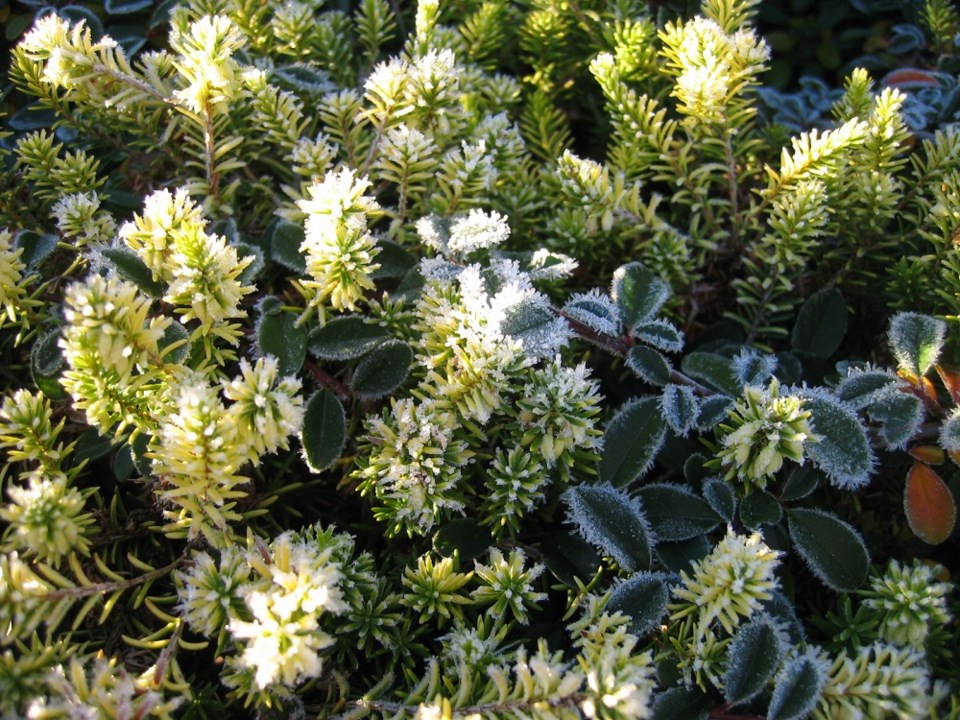Despite the mild temperatures created by El Niño, we are in the midst of an Arctic cold spell.
I hope you had the opportunity to protect your tender plants, stored bulbs, and hardy annuals.
Winter vegetables, too, will need some protecting with frost blankets, and root crops should have been lifted by now and safely stored.
I’m most concerned about container plants on patios and decks. They all need to be moved into warm, more protected locations, or at least wrapped with a proper insulating material like N-sulate, which can have up to a 10°C rating.
If you have no place to bring containers inside, it’s important to group them closely together in a location out of the wind and wrap all of them as one unit.
All your roses, even the hardy shrub roses, should be mulched with fir or hemlock bark mulch piled up at least 8-10 inches over the bud union or the root system.
Tree roses are especially vulnerable because of the unprotected graft at the top of the stem. You should either place a 4-5 foot tall silo of wire around the tree and over the bud union and fill the frame with bark mulch, or create a tripod of 2” X 2” poles to cover up past the top and wrap the framework with N-sulate and bubble poly around the whole structure.
More tender plants, like camellias, tender rhododendrons (the H-3’s), nandinas (or Heavenly Bamboo) and broad leafed daphnes should also be wrapped with N-sulate, especially if they are exposed to cold winds, to prevent the foliage from becoming burnt.
Soft herbs like rosemary and bay trees will also need protection as well as less hardy lavenders like the Spanish types.
If we get a heavy snowfall, it should be removed immediately from hedging cedars and other upright evergreens like the beautiful blue junipers, to prevent the branches being bent over and ruining their shape. I like to use a corn broom to knock the snow off from the bottom of the branches with an upward motion, to prevent any breakage.
Most winter flowering plants and trees will lose a few blossoms but should flush out again when it becomes milder. All your bulbs which have already come up will be fine, as the flowers are still deep in the stems. Garlic that is already showing green shoots should also be okay.
It sounds like this will be a short cold spell, but because temperatures are predicted to drop below -10°C to -15°C, there is bound to be some damage. Be sure to water plants under the eaves of your house, especially the broadleaved ones, as soon as the freezing temperatures are over, to rehydrate their foliage.
It’s wise to check your entire yard as soon as possible, to catch anything you may have forgotten to winterize.
Good luck, and I hope all your plants over-winter well.



